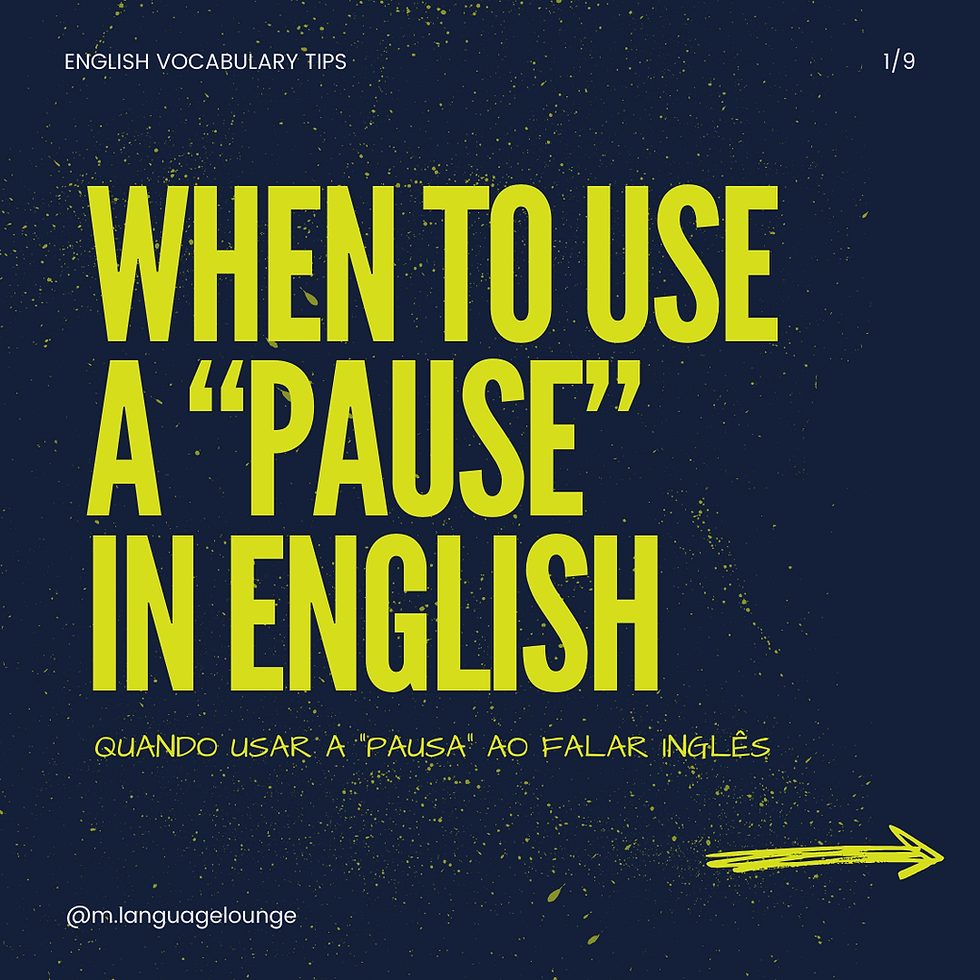'Wait for it': Knowing when and where to pause when speaking English
- Michael Warren

- Feb 13, 2024
- 2 min read

Learning English is all about vocabulary, grammar and gaining confidence. One of my favorite tools for that is "the pause". Speaking, being fluent is highly influenced by how well you communicate.
The strategic use of pauses while speaking is an incredible tool. Pauses are not merely moments of silence; they are strategic breaks that can enhance clarity, convey emotions, and captivate listeners.
In this guide, we'll explore the art of using pauses effectively in English communication.
Why Are Pauses Important?
Pauses serve multiple purposes in spoken communication:
1. Clarity and Comprehension: Pauses give both the speaker and the listener time to process information. They allow for the absorption of complex ideas and aid in understanding.
2. Emphasis and Expression: Pauses can emphasize key points, words, or ideas. They add rhythm and flow to speech, enhancing expression and conveying emotions effectively.
3. Thoughtful Delivery: Pauses provide speakers with time to gather their thoughts, organize their ideas, and speak more deliberately. They prevent rushing and promote clear, confident speech.
Types of Pauses:
1. Grammatical Pauses: These pauses occur naturally in English speech at the end of sentences, after punctuation marks, and during natural breaks in speech patterns.

Examples: when using a comma or period, after phrases that begin with prepositions and adverbs, or enumerating items on a list.
2. Dramatic Pauses: Used for emphasis and to create suspense or tension, dramatic pauses are intentional breaks that draw attention to specific words or ideas.
Examples: "Ladies and gentlemen", "And the winner is..."
3. Reflective Pauses: These pauses signal that the speaker is considering their words carefully, often used to indicate hesitation, uncertainty, or deep thought.
Tips for Using Pauses Effectively:
1. Practice Awareness: Pay attention to natural pauses in English conversations and speeches. Notice how they contribute to clarity, expression, and overall effectiveness.
2. Purposeful Pausing: Before speaking, take a moment to plan where you will pause for emphasis or clarity. This can be especially helpful when delivering presentations or speeches.
3. Vary Your Pauses: Experiment with the length and timing of your pauses. Short pauses can create anticipation, while longer pauses can signal a change in topic or tone.
4. Listen and Learn: Pay attention to how native English speakers use pauses in movies, TV shows, podcasts, and speeches. Emulate their techniques and adapt them to your own speaking style.
5. Practice, Practice, Practice: Incorporate pauses into your daily English practice routine. Record yourself speaking and listen for opportunities to improve your use of pauses.
.png)






Kommentare